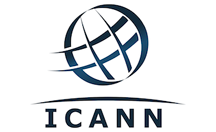Connecting the Unconnected: Perspectives from the US State Department
When we launched Webat25.org, Web Inventor Sir Tim Berners-Lee posed a number of challenges he felt were vital to overcome in order to protect and enhance the Web in future. One of these was: “How do we connect the nearly two-thirds of the planet who can’t yet access the Web?”.
In this short film, US Digital Ambassador Daniel Sepulveda offers some perspectives on the importance of this goal, and how we might meet the challenge.
Video transcript:
Ambassador Daniel A. Sepulveda: I think this is actually the most important question that we have facing the community relative to the Internet. And that is: how do we ensure that the billions of people living in the Global South – particularly in Africa and Latin America and Southeast Asia - are connected to this global platform?
In the first instance, it’s absolutely critical for social development. And it’s also critical for economic development. In terms of social development: a friend of mine went to speak to a class. A child raised his arm and said, “What’s the Internet?” My friend said, “Who here knows what the Internet is?” And nobody raised his hand. And then one child raised his hand and said, “I don’t know what it, is but my mom has it.”
And the point of the story is: 1) that that school is not connected to the Internet; and; 2) that these 14 children were not having access to all the information and tools available to help them grow as individuals and become fully productive citizens of society, because they were not connected to the Internet.
It is our primary purpose, our primary challenge, a function of social and economic justice, that we connect every child in the world and every community in the world to the Internet.
The way we’re going to do that is through ensuring that there is a legal and regulatory environment that encourages investment in networks, and that there is the capacity and skill and knowledge base, both within policymakers and the private sector in the Global South, to ensure that these networks are built and that they get connected - particularly infrastructure like schools and hospitals - but in every home and every community in the world.









